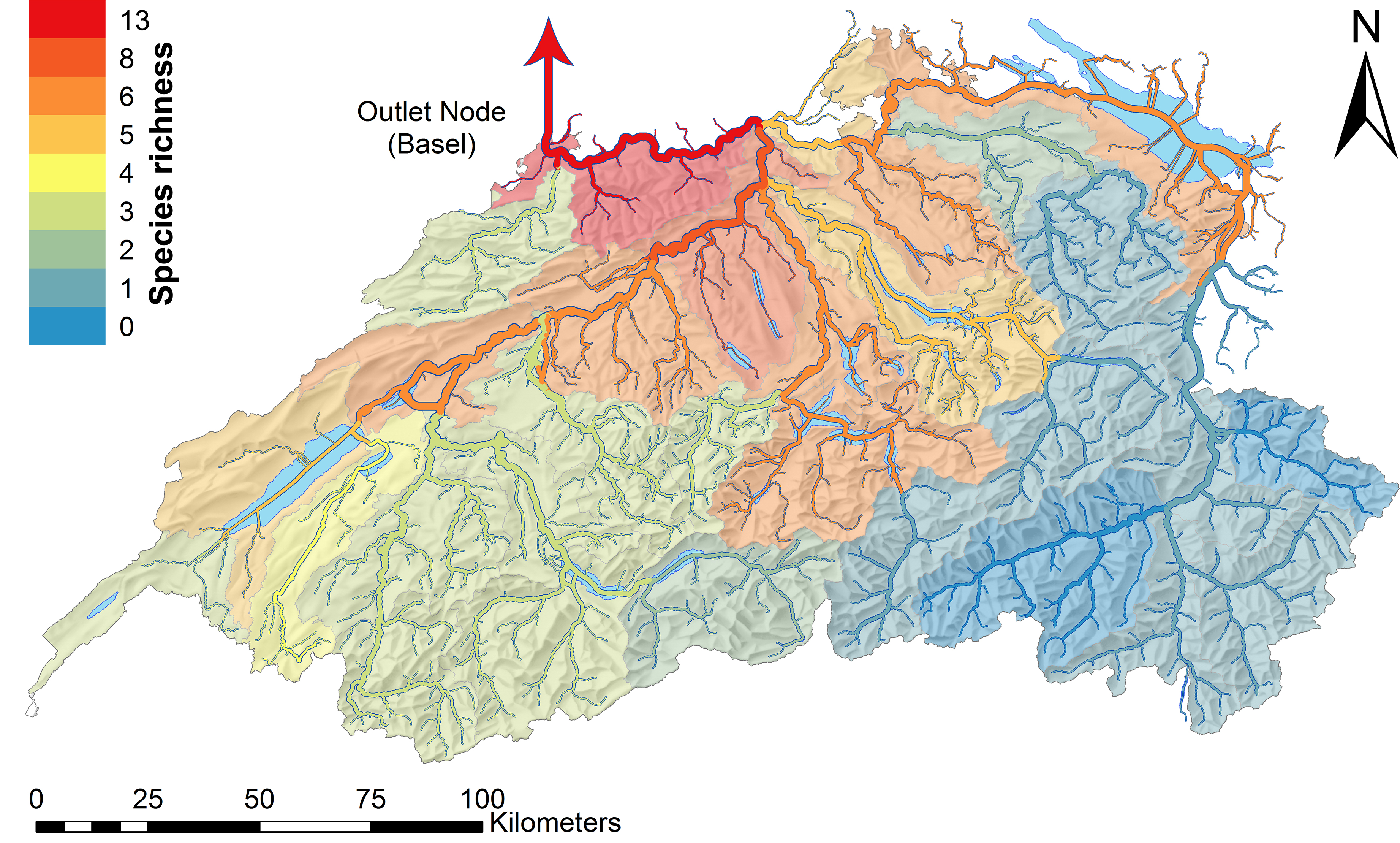
along the fluvial network is depicted as a heatmap, with streams and underlying catchments colorized with
respect to the observed catchment-level species richness (Figure from Ecosphere 9(2): e02102)
In the recently published open-access article in Ecosphere we studied the influence of fluvial network topology on different measures of amphipod diversity. The scientific novelty is the distinction between native and non-native species within a single taxonomic group in a large and natural system. The study covers the 27,882-km2 drainage basin of the river Rhine in Switzerland and is based on a graph theory approach.
Patterns of native and non-native species in fluvial networks
As hypothesized, species richness increased along the network from headwaters to the outlet nodes. But native and non-native amphipod showed different patterns, with headwaters being refugia for native species and more downstream nodes being hotspots of biological invasions. Additionally, results from species turnover indicated a much lower dispersal limitation for non-native species. The amphipod community structure closely mirrored the topological modularity of the network.
Implications for conservation ecology
Our results highlight that connectivity plays an important role in community formation, also on a larger scale. Rivers and streams are essential in explaining biological invasions.
